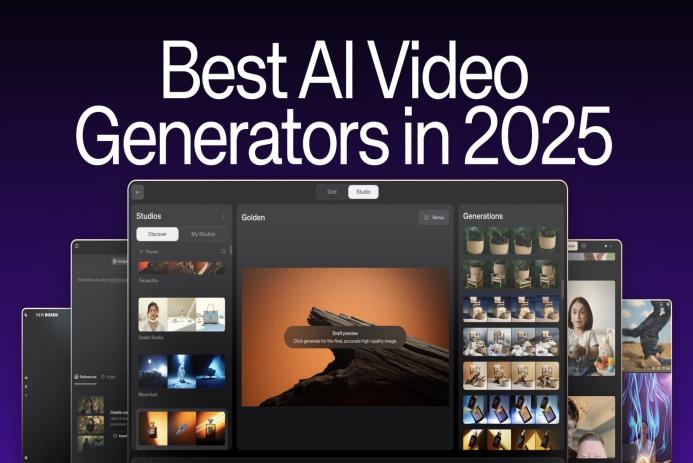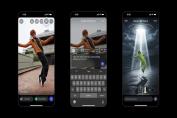Best AI Video Generator 2025: In-Depth Comparison of 10 Top Tools
- 08 November, 2025 / by Fosbite
Introduction: Why AI Video Generators Matter in 2025
AI video generation has moved from curiosity to practical creative tool. I say that from a bunch of late nights testing renders and swapping notes with editors — the last 18 months turned glitchy experiments into genuinely usable footage. Whether you’re an indie filmmaker, a marketing lead, or a content creator trying to hit a campaign deadline, knowing which is the best AI video generator for your workflow saves time, money, and a lot of chewing-the-why-out-of-my-hair stress.
What This Guide Covers
I ran the same cinematic prompt through 10 leading tools so you can see how each model interprets the brief. I graded them on accuracy, realism, consistency, and creativity — and then I tracked the pragmatic stuff: price, trial availability, max resolution, and camera controls. Expect both high-level takeaways and the kind of gritty notes you only get after repeating a prompt 10 times.
Why Use an AI Video Generator?
Short version: speed and creative scale. AI video generators are great for fast concept visuals, marketing cutaways, storyboards, background shots, and creative experiments that used to require a full crew. They can produce usable B-roll or establish shots at a fraction of studio costs — not perfect, but often good enough. Studios are already prototyping entire scenes with these tools; some startups are building production pipelines around them.
How We Tested These Tools
Fair comparisons need the same constraints. I used one detailed cinematic prompt across all platforms to get apples-to-apples results. Important caveat: different tools favor different prompt styles, so your mileage will vary. Still, the common prompt shows where each model naturally excels or struggles.
- Evaluation criteria: Accuracy, realism, consistency, creativity.
- Feature checks: Free trial, price, text-to-video vs image-to-video, camera controls, lip sync, sound generation, max resolution, shot length.
The Test Prompt (Shortened)
Create a cinematic shot of a futuristic coastal city at golden hour. Camera tracks a sleek flying vehicle over a wide river with glowing boat traffic, neon-lit skyscrapers reflecting sunset, bioluminescent algae, pedestrian bridges with depth-of-field, lenticular clouds, volumetric rays, bokeh holograms, and a slow push-in reveal of a central tower. Hyper-realistic textures, cinematic teal-orange grading, subtle motion blur, and lens flare. Style: Blade Runner meets architectural visualization. (Yes, it’s dense — the kind of prompt engineers and DPs quietly love and then curse.)
AI Video Generators Compared (Quick Overview)
Below are compact, experience-driven notes on how each tool handled that mess of a prompt. I highlight practical strengths and weaknesses and give a quick suggestion about who should try the tool first.
1. Kling AI (2.0)
Strengths: It nails motion rhythm. Pans feel like camera moves — intentional, plotted. Filmmaker-friendly controls make timing and cinematic pacing easy to dial in.
Weaknesses: You need to babysit timing windows to avoid artifacting; small texture errors popped on the wet surfaces in one pass. Not a dealbreaker, but be ready to iterate.
Best for: Editors and filmmakers who want fine camera control and believable cinematic motion.
2. Runway (Gen 4)
Strengths: The first frame looked like a photograph — lighting, texture, and photorealism were top-tier. Its image-to-video workflow is powerful for iterating a still into motion without blowing your budget.
Weaknesses: Advanced renders are compute-heavy and can get pricey. Worth it if photorealism matters.
Best for: Designers and agencies prioritizing photorealism and refined color grading. If you’re comparing models, Rapid model-rollout coverage like Runway Gen-4 and the latest model rollouts is handy.
3. Google Veo 2
Strengths: Predictability. Geometry and reflections were handled well and consistently across attempts.
Weaknesses: A bit conservative creatively — less punch out of the box.
Best for: Teams that need repeatable outputs for product or architectural visualization; when consistency beats flash.
4. OpenAI Sora
Strengths: Clean outputs and useful storyboard-style controls make it smooth for concepting.
Weaknesses: No free trial at the time. And camera control wasn’t as granular as Kling or Runway.
Best for: Rapid concept development, especially if you already use OpenAI tools elsewhere in the pipeline..
5. Pika (2.2)
Strengths: Fun, fast, and great for stylized social clips. Interface is forgiving for non-technical users.
Weaknesses: Complex reflections and caustics gave it trouble in this test.
Best for: Quick social content and stylized pieces where photorealism isn’t the objective.
6. Adobe Firefly
Strengths: Commercially safe — licensing and training provenance are clear. Deep Creative Cloud integration makes it useful for branded content workflows.
Weaknesses: Tends toward a conservative visual style; many teams will want a pass in Premiere or After Effects for polish.
Best for: Agencies and enterprises needing legal certainty and smooth CC integration. Adobe’s write-up on licensing is worth reading.
7. Hailou MiniMax
Strengths: Extremely faithful to prompts with few glaring errors. Strong aesthetic choices — a real competitor to Kling and Runway when you need prompt fidelity.
Weaknesses: Less mature tooling ecosystem and fewer integrations right now.
Best for: Creators who want high-quality results with minimal prompt tweaking.
8. Luma Dream Machine
Strengths: Exceptional depth and volumetric lighting on close-ups. If your shot needs atmosphere, Luma delivers.
Weaknesses: Long pans require patience; some jitter appeared in sustained camera moves.
Best for: Dramatic lighting and near-photoreal close-ups.
9. Artlist
Strengths: Designed with music-driven sequences in mind — great sound library tie-ins and timing tools.
Weaknesses: Visual detail lagged behind Gen-4-style models.
Best for: Promo videos where audio selection and narrative timing are the priority.
10. Vidu
Strengths: Lightweight, fast, and low-cost — great for short clips and motion overlays.
Weaknesses: Lower max resolution and more obvious artifacts on complex reflections.
Best for: Rapid prototyping and scenarios where turnaround time is everything.
The Verdict: What’s the Best AI Video Generator?
Short answer: it depends on your priorities — photorealism, filmmaker control, cost, or legal certainty. The nuanced answer: blend tools.
- Best for photorealism: Runway Gen 4 (when image-to-video photorealistic results matter).
- Best for filmmaker control and motion: Kling AI (great camera controls and cinematic motion).
- Best balance of fidelity & prompt consistency: Hailou MiniMax.
- Best for commercial/legal certainty: Adobe Firefly (training provenance and CC integration).
Most teams I know use hybrid pipelines: make a still (maybe in Midjourney), animate it in Runway, then handle voice and lip-sync in Kling. That combo — image-to-video then edit — often gives the best trade-off between quality, cost, and speed.
Practical Tips & Workflow Suggestions
- Start with stills: Perfect your key frame first — image-to-video is cheaper and faster for iteration. It’s the number-one time-saver I keep telling teams about.
- Split the pipeline: Use the tool that renders textures best for backgrounds and another that handles motion or lip-sync better. Hybrid AI video production workflow: image-to-video then edit — works wonders.
- Mind licensing: If the video is commercial, prefer enterprise-safe options that document training provenance (e.g., Adobe Firefly) — this avoids late-stage legal headaches.
- Post-process: Color grade, denoise, and unify outputs in your NLE. Even small tweaks in Premiere or After Effects make different AI outputs feel like the same world.
- Prompt engineering for video: Be explicit about camera moves, lighting, and lens artifacts (motion blur, lens flare, bokeh). Tools respond differently — sometimes simpler is better.
One Practical Example (Hypothetical)
Picture a small agency needing a 20-second hero B-roll for a tech landing page: generate a photoreal cityscape still in Runway, animate the vehicle in Kling for believable motion, then export to Premiere for color grading and add licensed music from Artlist. That hybrid approach saved a team I worked with roughly 60% of their expected B-roll budget — not an exaggeration. The trick is knowing each model’s sweet spot and where to hand off between tools.
Final Thoughts
AI video generators are now solid enough for real pipelines. The truth is: you get the best results by combining tools, learning each model’s strengths, and spending a bit of time on prompt design. Test on a short clip, iterate fast, and pick the path that minimizes rerenders.
If you want to share your experiments or ask about a specific workflow (Runway Gen 4 vs Kling AI vs Hailou MiniMax comparison 2025, anyone?), I’d love to hear about it — leave a comment or reach out in the communities around each tool. And one last practical note: when you’re moving large generated files, pick a fast transfer and storage strategy so your pipeline doesn’t grind to a halt.










